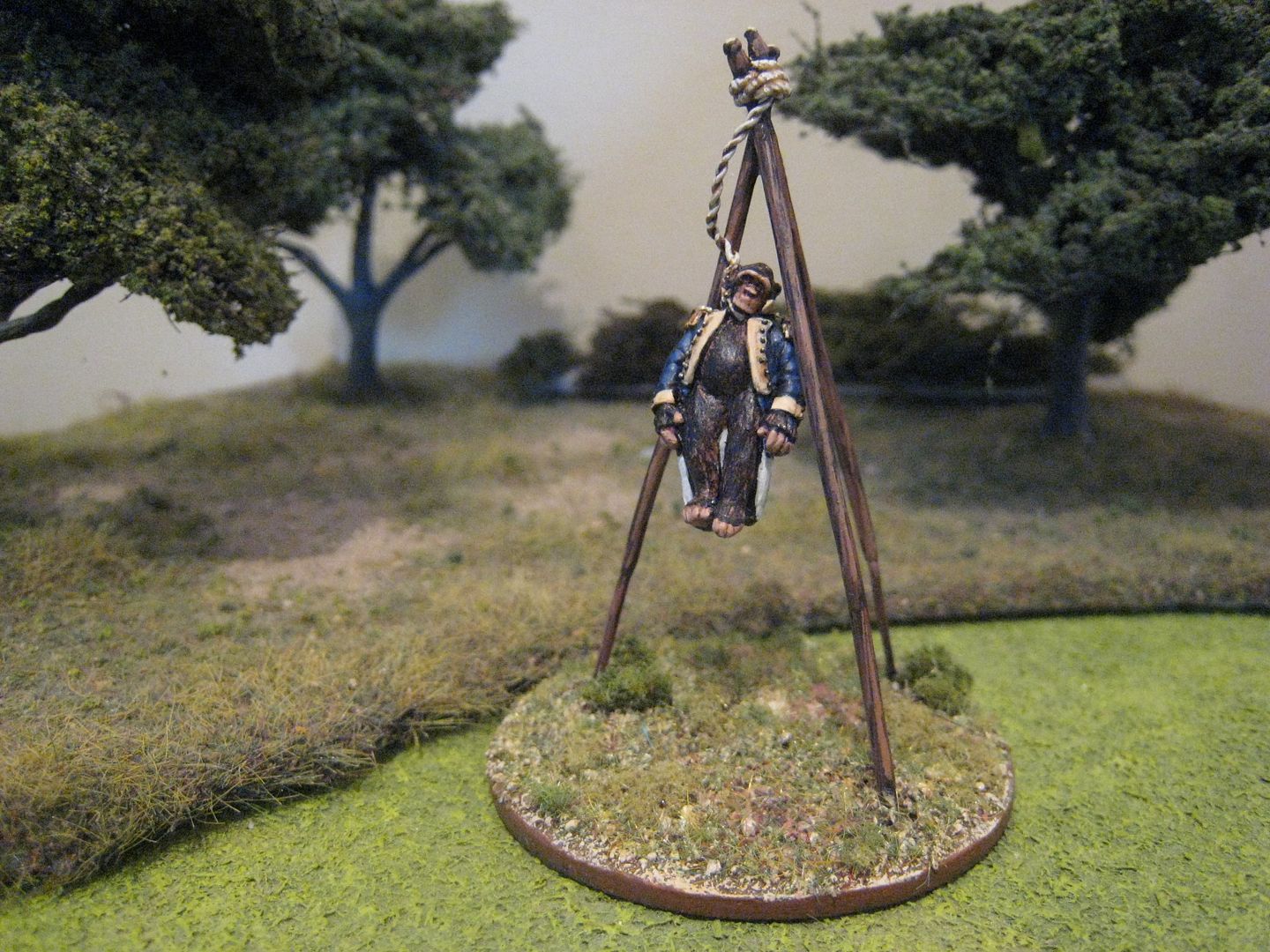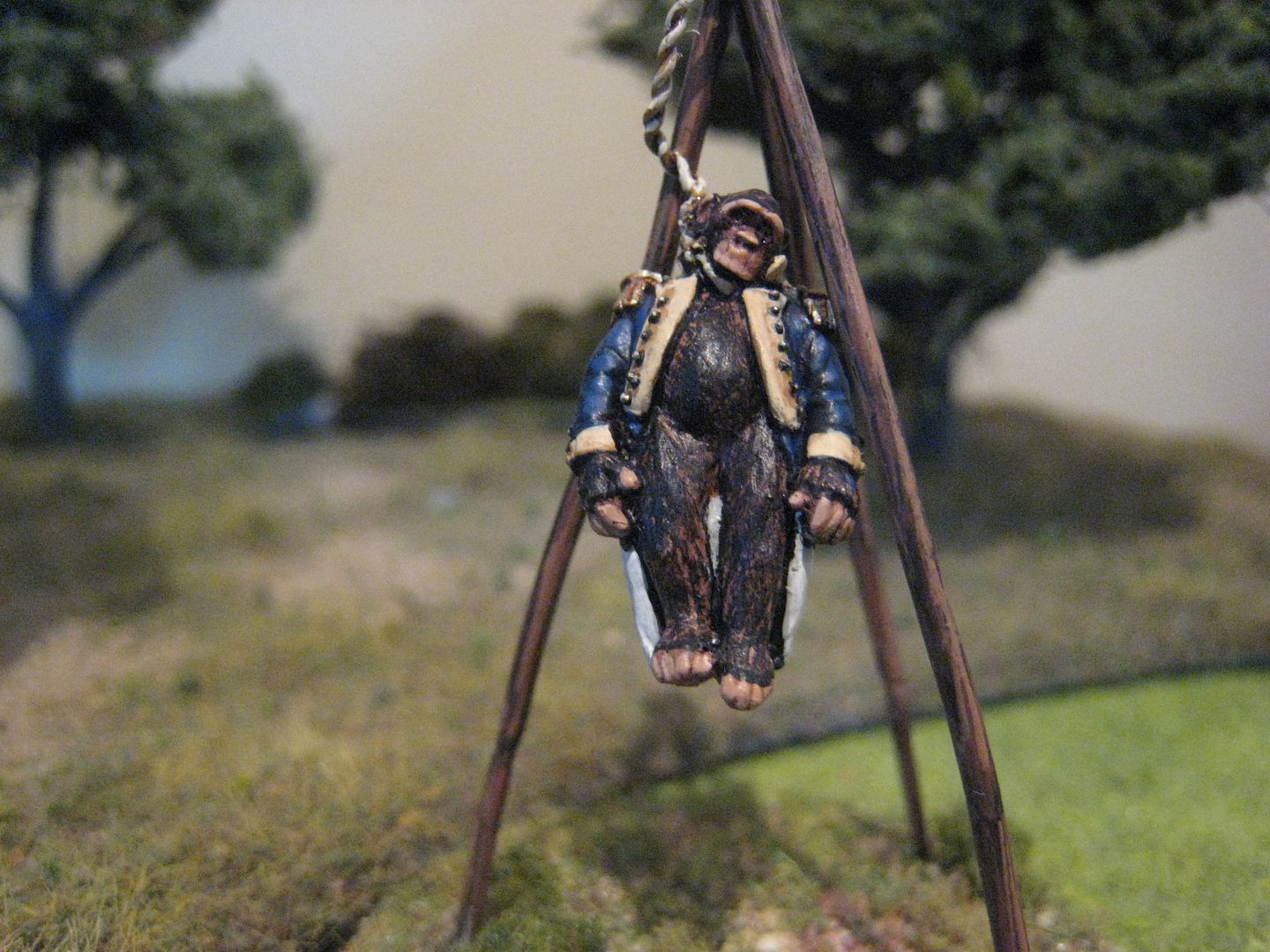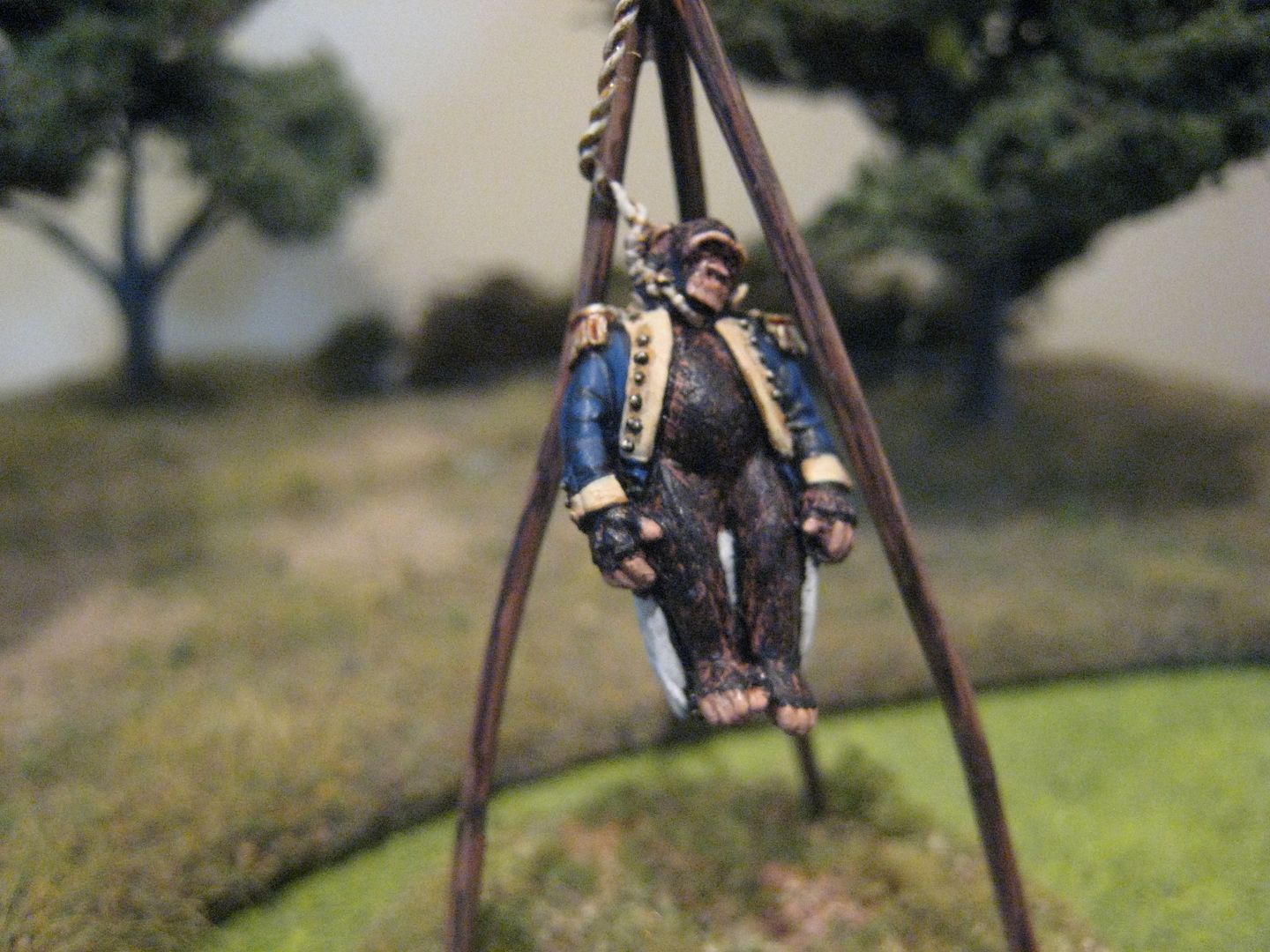The title of this post is perhaps a bit naughty, but it does set the scene for a fascinating little episode from the very end of the war. While working on my loyalist East Florida Rangers and King's Carolina Rangers I researched the life of those units' commander, Thomas Brown. As I explained in those earlier posts, Brown became a staunch supporter of the royalist cause in Georgia and raised troops to fight for the King. At the end of the war, in late 1782, Brown and several thousand other loyalist refugees found themselves in St Augustine in Florida. St Augustine had been founded by the Spanish in the 1560s but was ceded to the British in 1763 under the Treaty of Paris that concluded the Seven Years' War (the Spanish received Havana in return). Another Treaty of Paris, the one of September 1783 that finally settled American independence, returned St Augustine to Spanish rule (Florida remained a Spanish possession until it was, in effect, conquered by Andrew Jackson's US forces in 1821).
The second Treaty of Paris was a disaster for those loyalists who had sought sanctuary within the British Empire but now found themselves on Spanish territory. In time, most were transported to other areas, principally England, Canada and the Caribbean, but it's not difficult to imagine their consternation in the meantime. And that is the background to how a bunch of loyalists in St Augustine vented their frustration at events by dressing up a monkey as George Washington and stringing it up from an improvised gallows just outside the town. This bizarre incident is referred to in a letter from General Patrick Tonyn, who was the last British governor of East Florida and had commissioned Brown to raise his Rangers, to the Home Office in London.
The set here is from Eureka Miniatures. Tonyn simply referred to "a large ape dressed as if Mister Washington" (clearly even at the end of the war some British generals continued to refuse to acknowledge George Washington as being of similar rank). Monkeys are not indigenous to north America but they had arrived in the Caribbean at least by the early 18th century, and probably earlier, by hitching rides in slaver ships from West Africa. Presumably the unfortunate monkey appropriated by St Augustine's irate loyalists in 1783 was similarly from a slaver ship (the initial Spanish rulers of Florida had been reasonably liberal in their attitude towards slavery, but the number of slaves soared once the British took control after 1763). I did try to find out what particular species of monkeys may have been around the east coast of America in the 1780s, but Eureka's figure lends itself well to the common chimpanzee and so that's how I painted it. I had planned to paint it black and then dry-brush it grey to highlight the fur; but looking at some photos I realised that you can see the pink skin quite clearly underneath the monkey's fur, and of course the hands, feet and face are pink-ish as well. So I painted the whole body using Foundry "South American Flesh 119B", then carefully dry-brushed it with black paint to suggest the fur, and finally highlighted the relevant areas with "South American Flesh 119C". Who knows whether the ape was supposed to represent Washington himself or the Continental army and America's new masters in general. I thought it probably unlikely that the residents of St Augustine would have access to a proper Continental general's uniform, so I painted an approximation with the deliberate mistake of having the lining and turn-backs white instead of buff.
This was a fun little set to do, if a tad gruesome. I can see its use in games as a bit of decoration at the edge of the table (like my duellists, who always make an appearance somewhere on the table). Incidentally, my original George Washington command stand is here. Painted over 10 years ago, it's not my best work, to be honest, and the great man deserves better. I have at least 3 other George Washingtons is my leadpile (the Perry freebie, the Wargames Illustrated subscription freebie and Eureka's "young George Washington" in his F&IW uniform. On my list of things to do at some stage is re-visit all my command figures (for both sides) and do some more personalities. I've made a start on the British side; I've compiled a list of all the brigade, division and army commanders required in the "British Grenadier!" scenarios and have begun to allocate figures to personalities. I hadn't realised, until I'd finished this list, that so many of the "commanders" in the scenarios are lieutenant-colonels and majors as opposed to brigadiers and major-generals; the traditional general in a red-faced-dark blue coat figure doesn't work for those offices.
Painted March 2016.
Friday, 1 April 2016
Subscribe to:
Post Comments (Atom)



6 comments:
Hi Giles. That's novel! For what it is worth, I believe that monkeys have tails and apes do not :-). Looking forward to seeing those new or renovated command stands. Pick a good figure for Webster, won't you?
That's an excellent story Giles and a superbly painted figure
Happy April Fools day Giles. Almost as good as Washingtons Wheelbarrow!
Cheers
Simon
Interesting little piece Giles, poor monkey.
I believe, according to deserter reports, all apes and monkeys at this time wore overalls.
Interesting background story and a nice piece of work, Giles.
Post a Comment